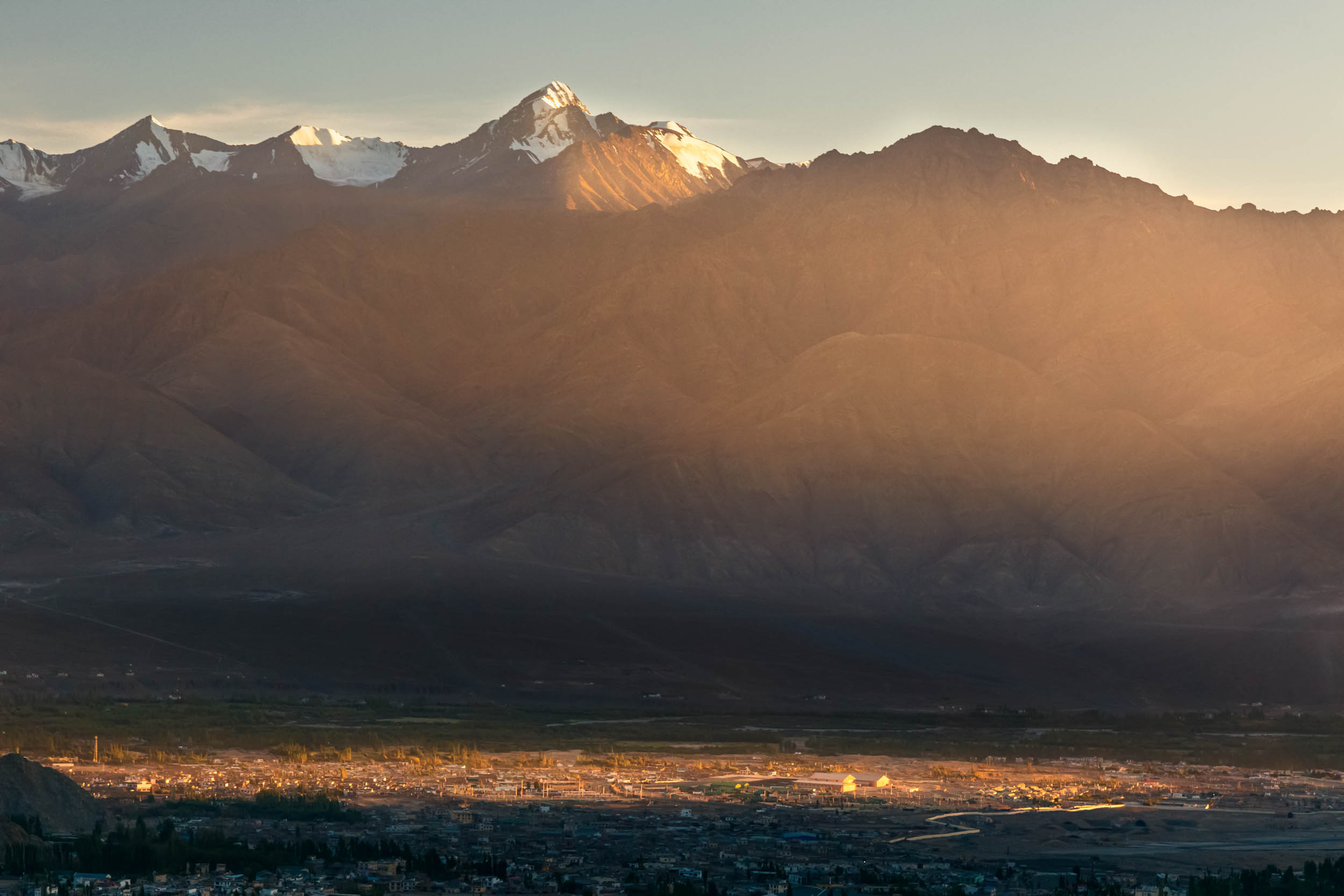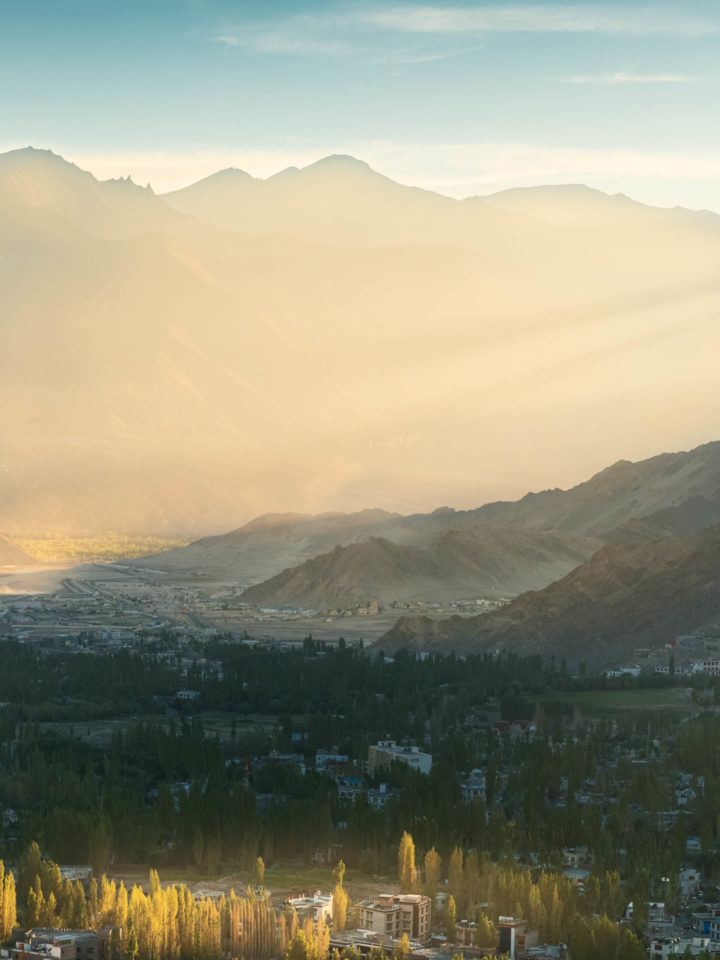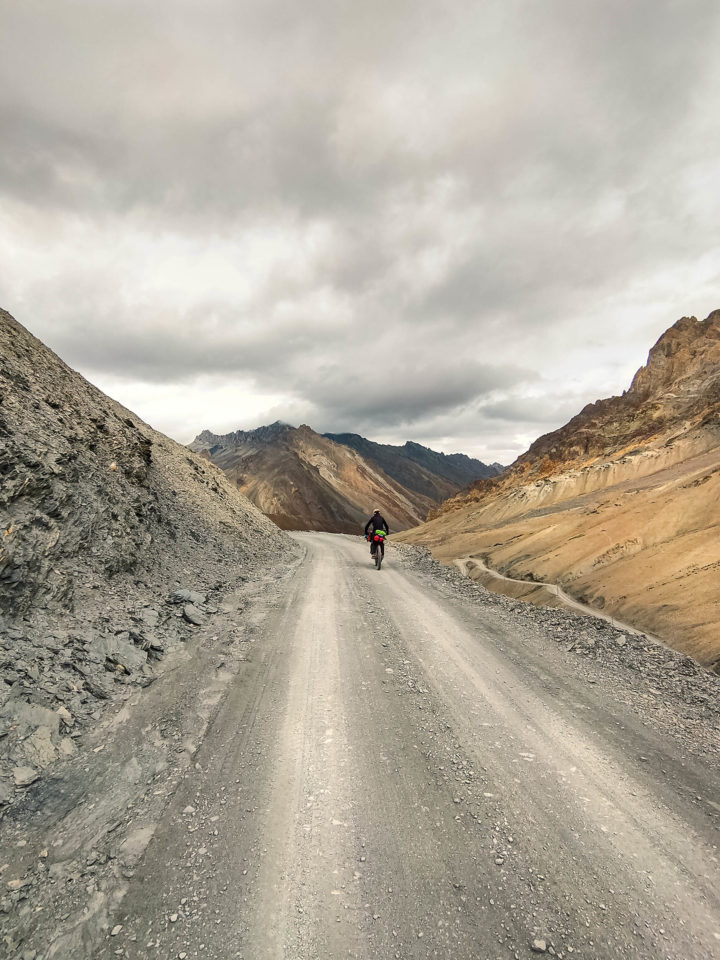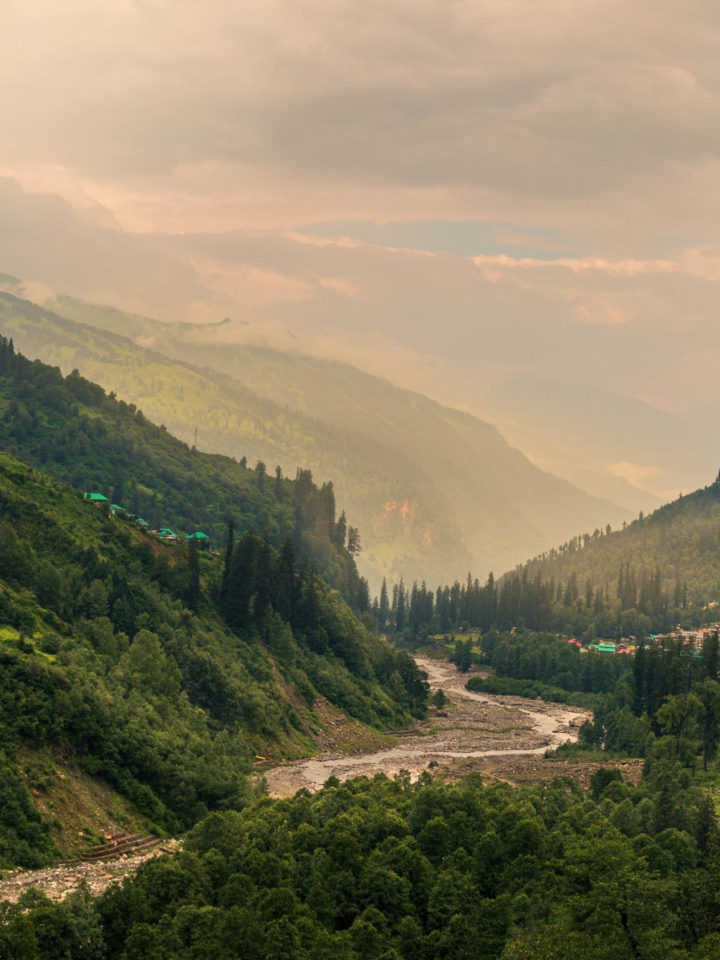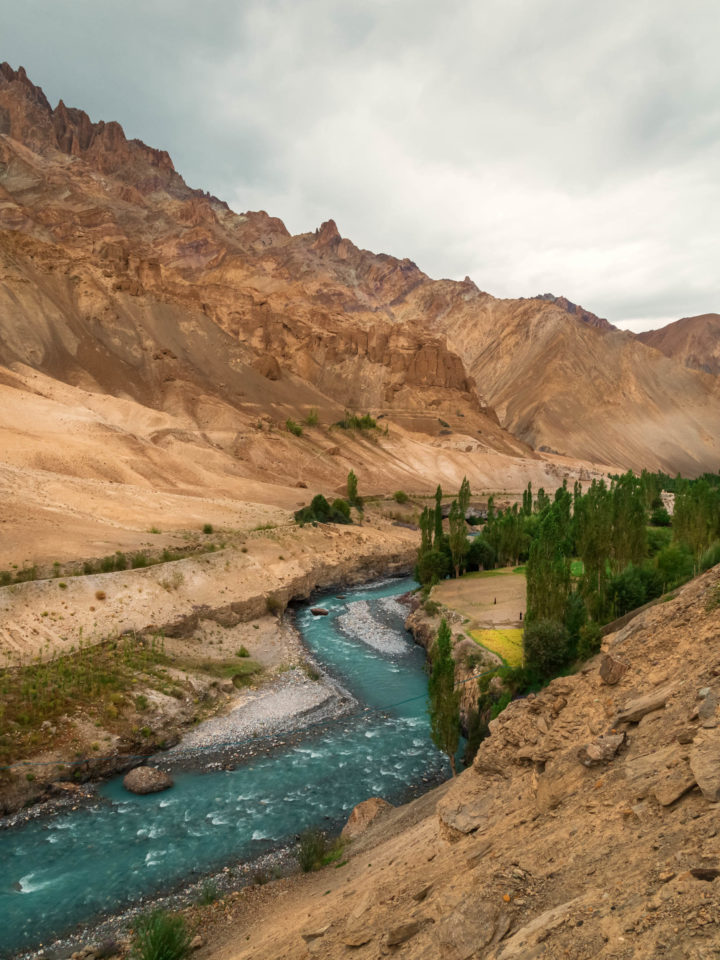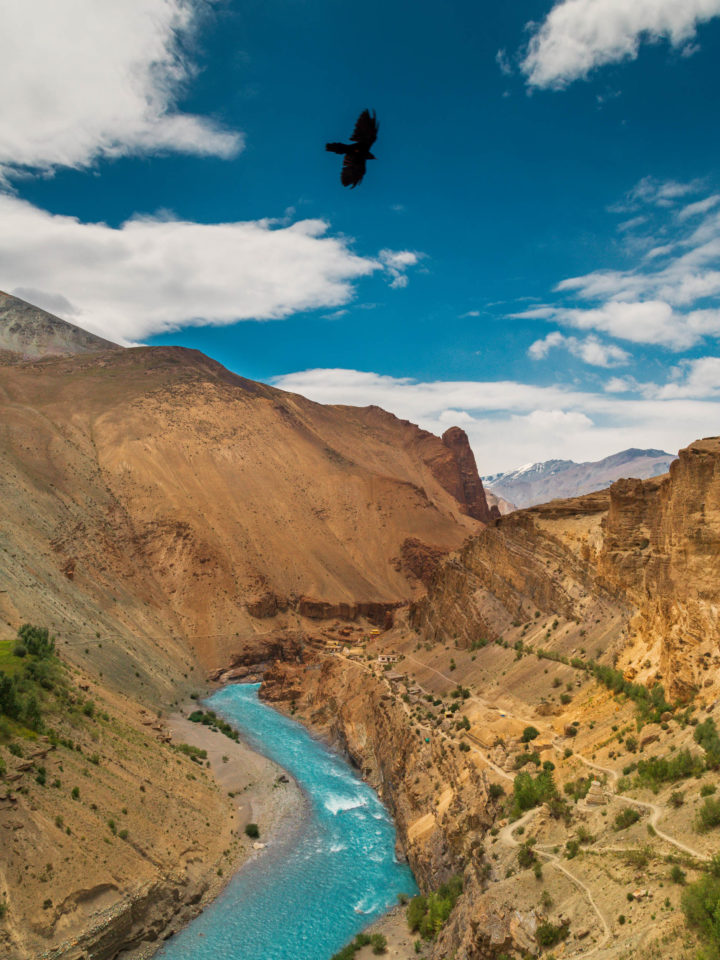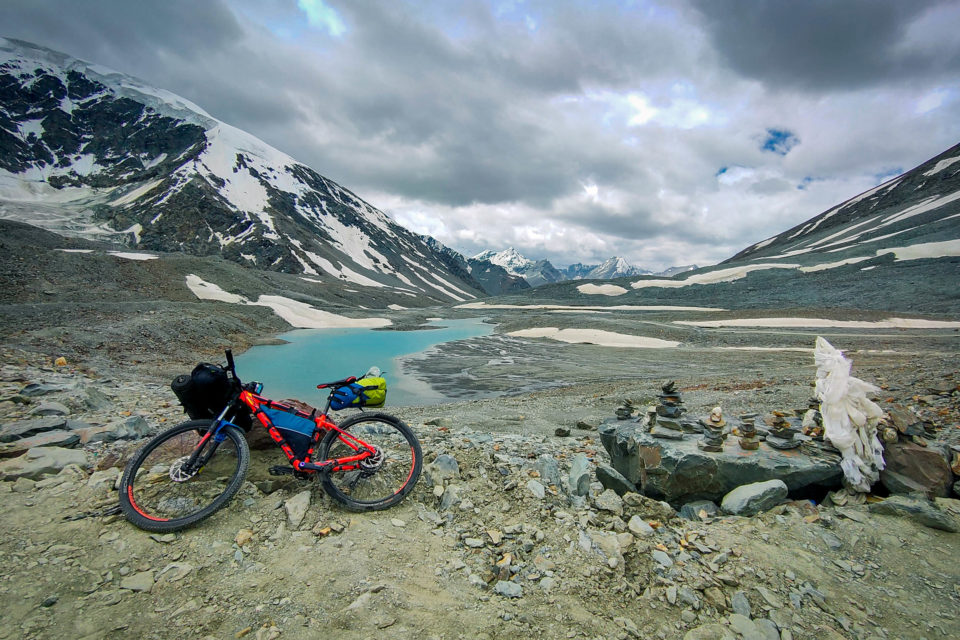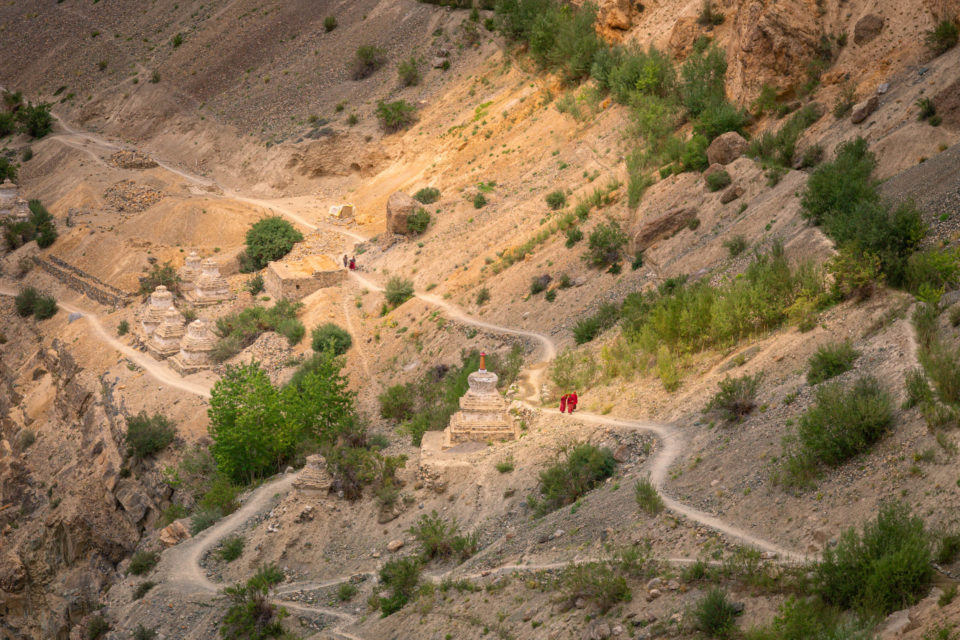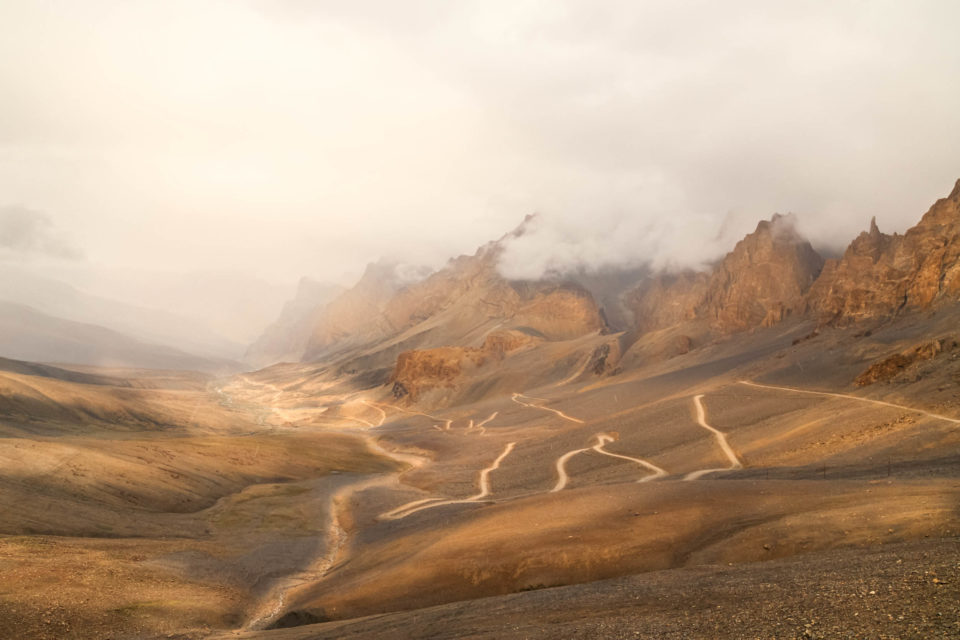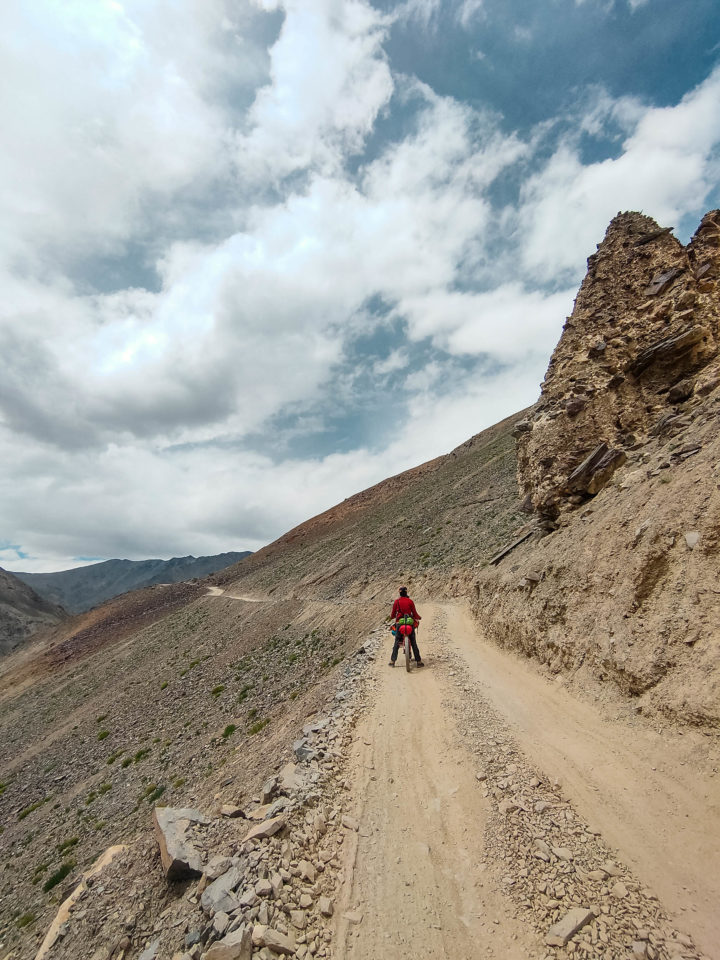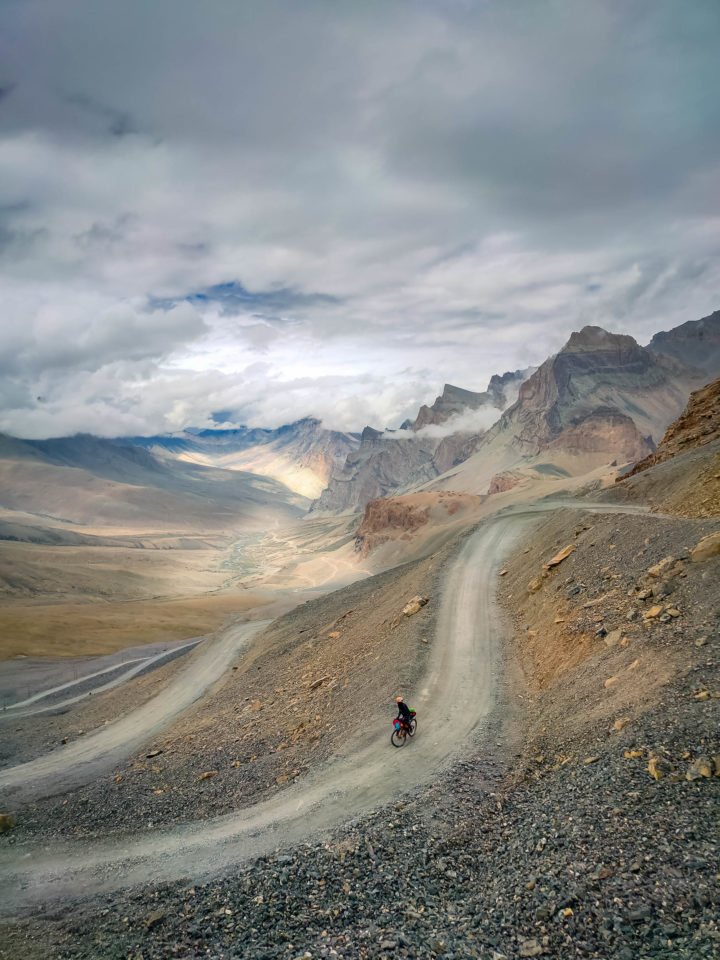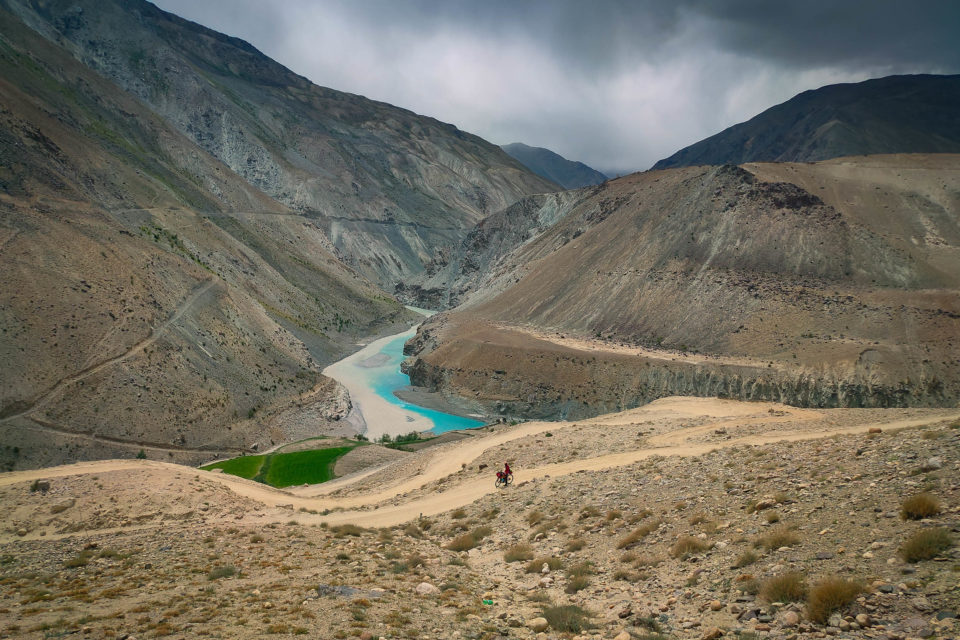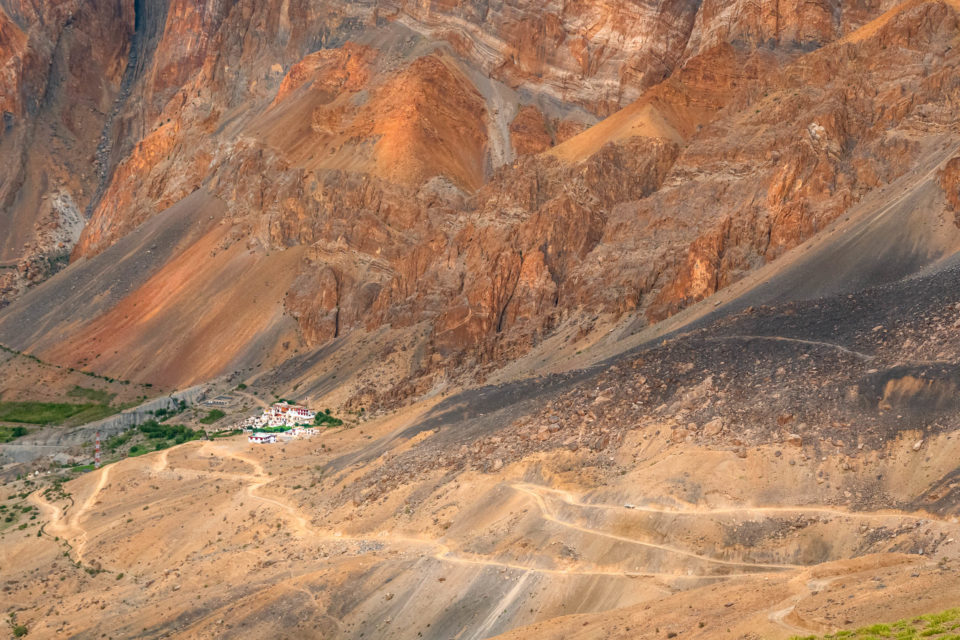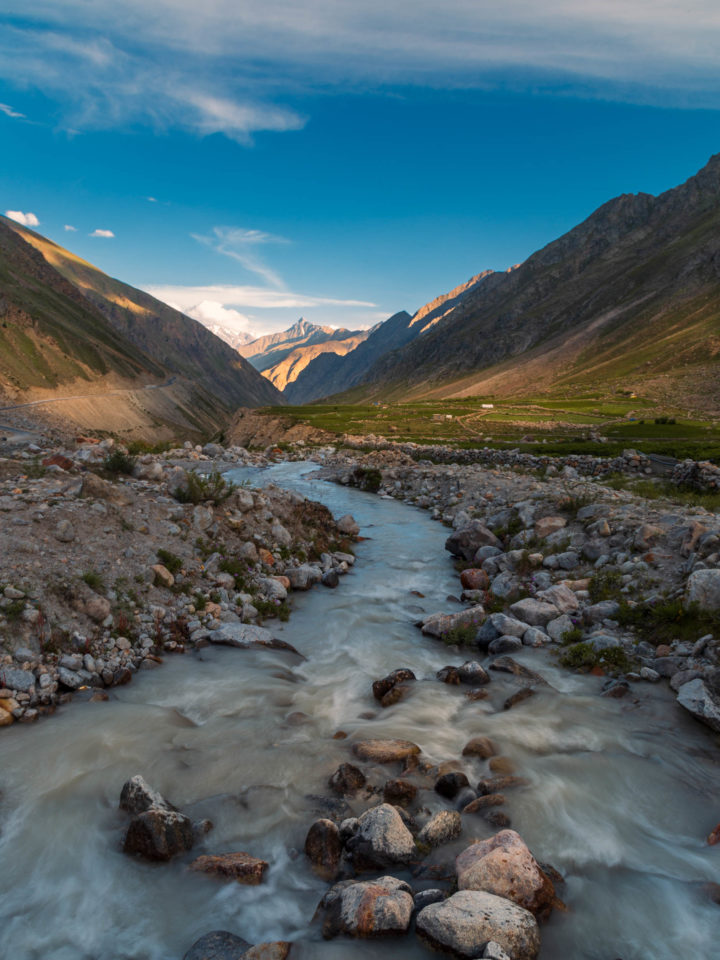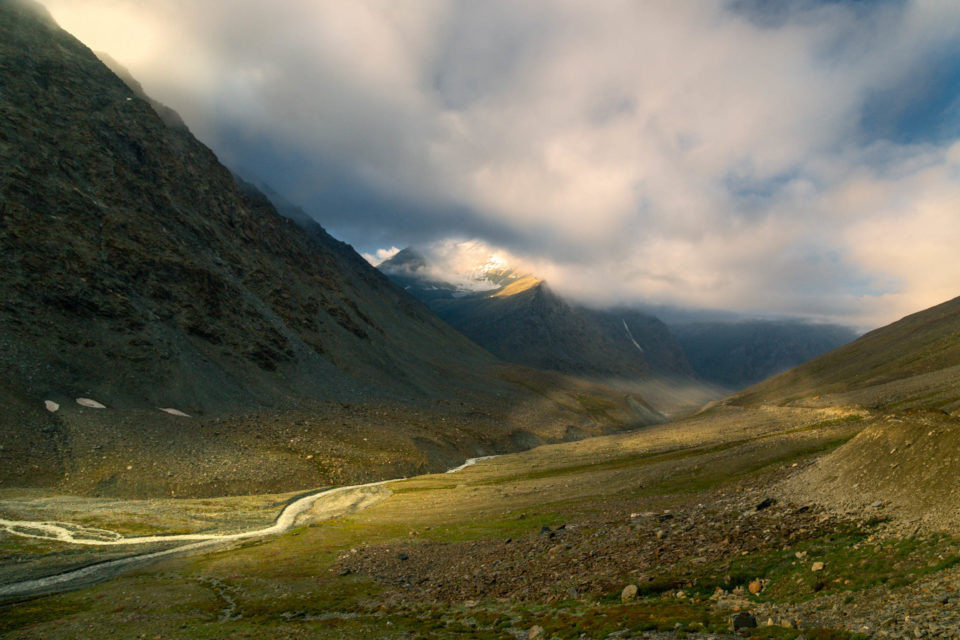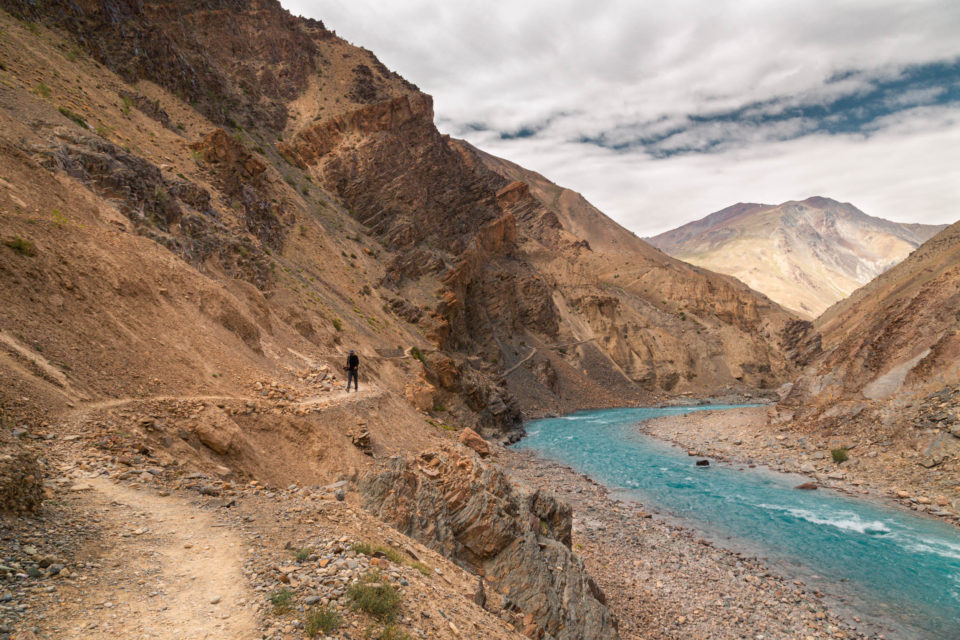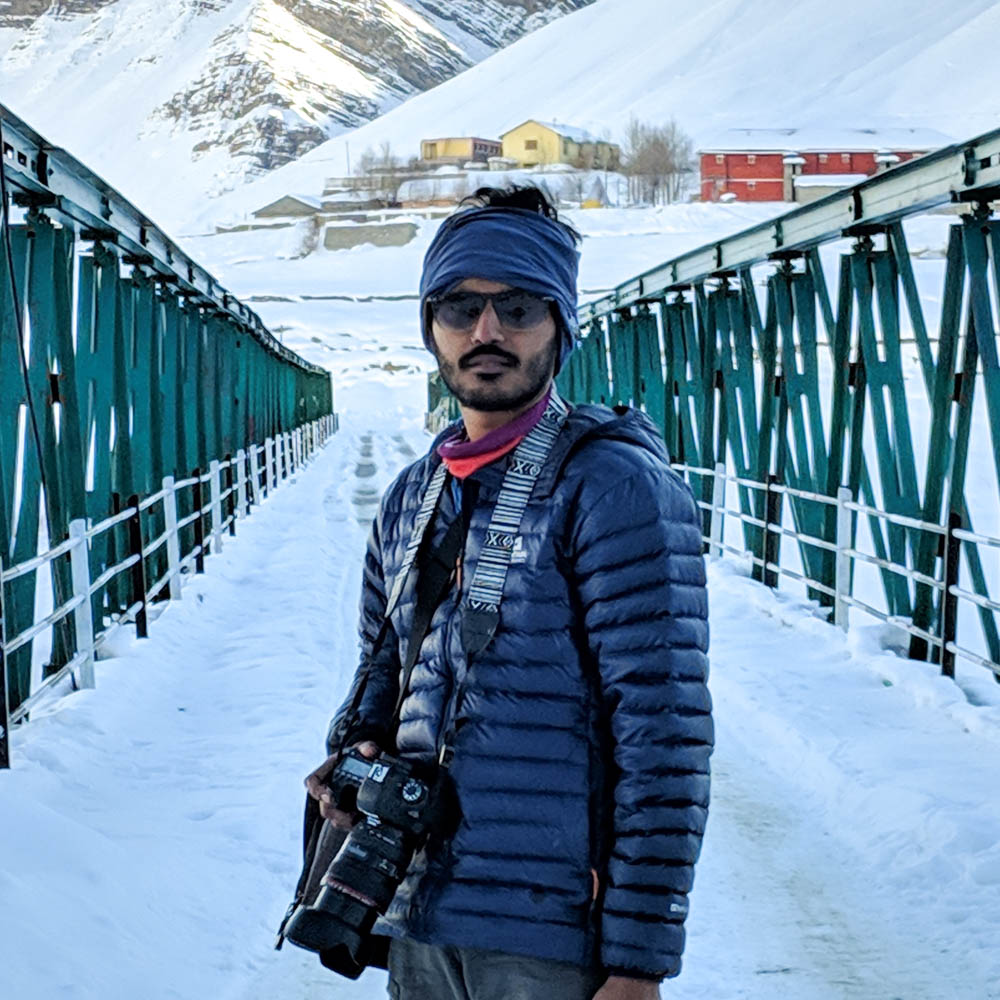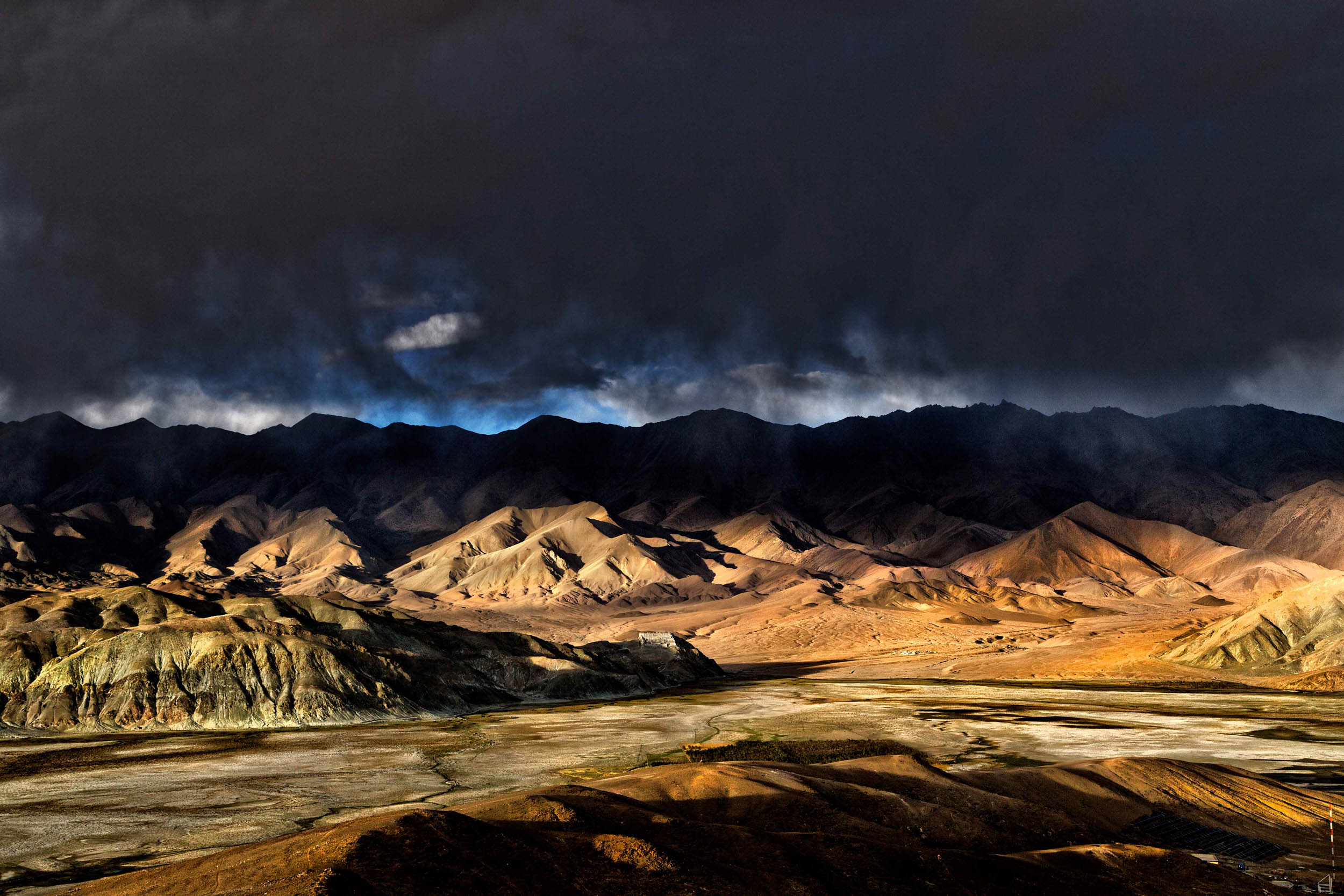Bikepacking Zanskar: A Journey Through the Valley of Copper
Share This
Continuing his foray into bikepacking, Abhirup Bose returned to the Indian Himalayas for a ride through Zanskar with a couple of friends. Find his story of experiencing pure joy and being overwhelmed by his home country’s beauty during their 14-day trip here, paired with another colorful set of photos…
Words and photos by Abhirup Bose (@abhiwandering)
Descending a narrow gravel doubletrack road on a cloudy day, I could see the confluence of two rivers a hundred feet below. Arriving at the end of the road, I stood where the Kurgiakh and Tsarap Rivers meet. It was an overwhelming experience to see one river with murky water and another with turquoise blue coming together and flowing fiercely without changing their own colors. Witnessing that at an altitude of more than 3,800 meters was humbling, and it made me fall in love with Zanskar.

The Tibetan meaning of “zangs” is copper, and Zanskar means white copper or copper palace. It’s a high-altitude semi-desert lying on the northern flank of the Himalayan range. It covers around 7,000 square kilometers, and the average altitude is around 4,000 meters. Its towering mountains reach a dizzying height of 7,700 meters, and it separates Ladakh from the Indian state of Kashmir. Zanskar is the inception point of many important rivers, such as the Tsarap, Zanskar, and Kurgiakh, tributaries of the Indus River, which flows through India, Pakistan, and China. The surrounding mountain range acts as a barrier, and as such, it’s mostly a rain shadow region. The only precipitation happens through snowfall during the harsh and extremely long winter periods.
Buddhism is the majority religion here, and the Drukpa and Gelugpa sects are both present. The local Zanskari language has similarities to Ladakhi-Balti languages. In recent years, tourism has picked up in some parts of the region. Although it brings financial benefits like building schools and roads, it is taking a significant toll on the fragile local flora and fauna.
My friends Sudhanshu, Chetan, and I came up with the idea of traversing the Zanskar through its northeastern side, avoiding the popular Kargil-Zanskar Highway, a tourist thoroughfare and strategically important route. We were excited because we couldn’t find any reports of anyone else bikepacking this route before us. Adding to the sense of remoteness, there were about 150 kilometers of unknown terrain on our route where we had no idea what to expect or if it’d be possible to resupply.
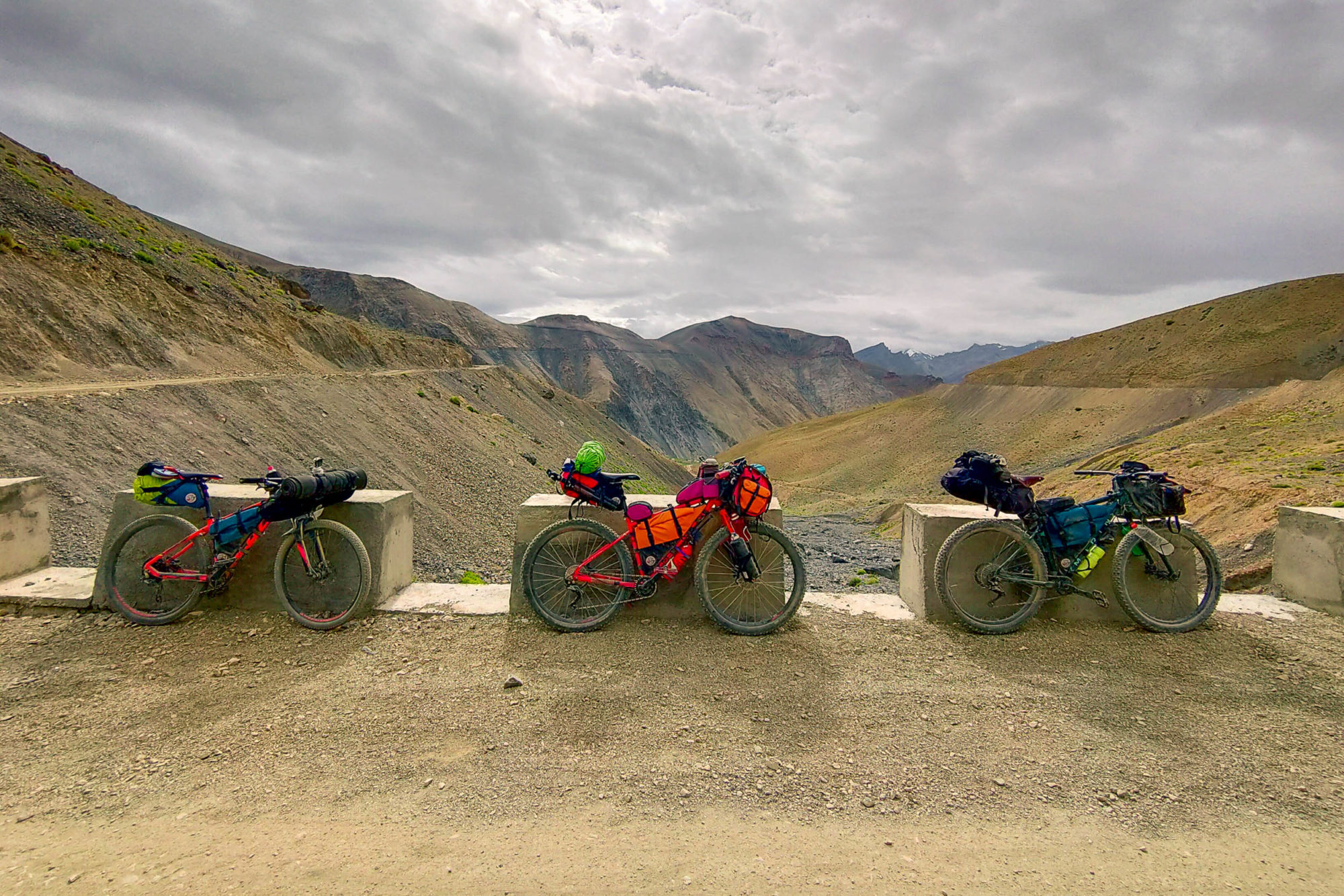
Once we escaped the hustle and bustle of Manali, Himachal Pradesh, I started to ease into the trip and look forward to the ride ahead. We pedaled along the start of the famed Manali-Leh Highway, a 500-kilometer touring highway. The first 23 kilometers were painstakingly long, and it was an uphill battle, but I was glad to ride through the Atal Tunnel, the world’s longest single-tube highway tunnel above 10,000 feet, which is just over nine kilometers long. It was a good warm-up, though I knew what to expect, having cycled the highway before (find my previous report linked below).
We left the highway behind on our third day and moved further northwest, bound for Zanskar. Here, our real adventure began. From the south side, a 16,580-foot mountain pass named Shinku La separates Zanskar from the neighboring Lahaul region of Himachal Pradesh. It’s the gateway to the region and the first of many hurdles thrown in our way.
People often ask me why I keep going to extreme places on a bicycle. What do you get from it? In short, the simplicity and freedom of movement motivate me. Though it is more complicated than hiking, it still makes more sense to me. And, in truth, I didn’t have any particular expectations for this bikepacking trip; I just wanted to give my best. In addition to the standard bikepacking gear, I was carrying an extra six kilograms of photographic equipment on my back, making me slower than my compatriots.
The first gradual and comparatively easy stretch ended before we’d even realized it. I had spent almost three weeks in the area for a climbing expedition last winter, but summer looked completely different. We checked our supplies and readied ourselves for the monumental climb ahead. Shinku La Pass is almost 40 kilometers uphill from the base. Loose gravel and numerous freezing river stream crossings would be coming our way and giving us a healthy dose of reality.
A mechanical failure amid a torrential hailstorm forced me to camp alone at a precarious spot near the Kurgiakh River. And the emergency camp wasn’t even the most eventful part of the day, as around 2 a.m., I had to go out of my tent to rescue a motorbiker who I heard crash nearby (that’s another story). After the long hours of hike-a-bike and an almost sleepless night, I was beyond weary.
Several more river crossings awaited me, and I was incredibly relieved when I finally stood atop Shinku La. The entire place is barren. No vegetation in sight, fierce wind, sub-zero tempratures, and it’s surrounded by gray granite. Up and over the top, I was reunited with my friends in the village of Kurgiakh later that evening.
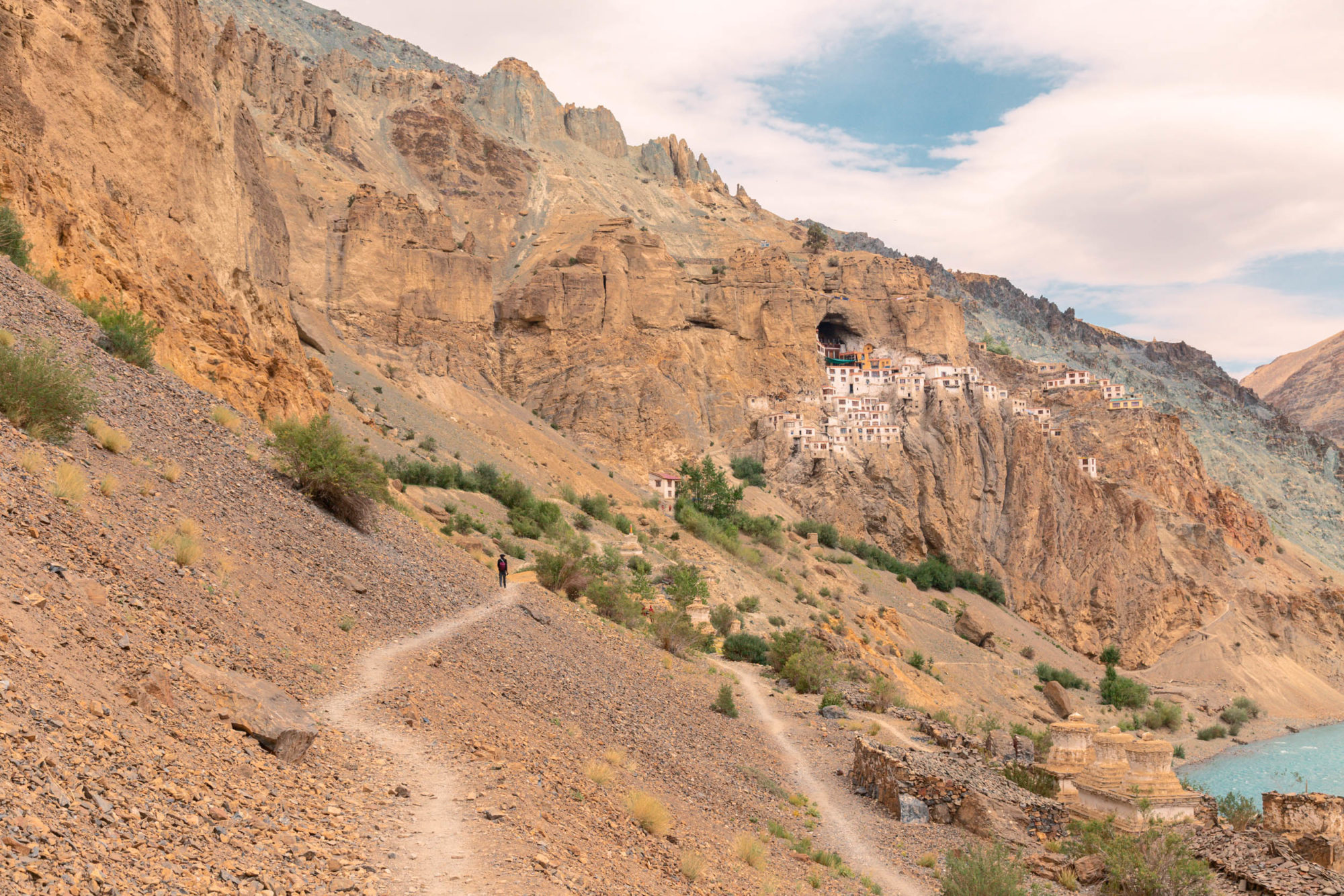
Further down the route, visiting the picturesque Phuktal Monastery was a longtime dream of mine. It is located deep inside the Lungnak Valley, and it is one of the only Buddhist monasteries in Ladakh that can still be reached exclusively by foot. Carved into a rock structure far above the water level, the Phugtal Monastery can be hiked to from Purne.
Lucky for us, Purne was our next objective. On our approach, the views of Tsarap and Kurgiakh Rivers confluence made me forget all about the hurdles we’d encountered up to that point. Purne is home to a few families living in traditional houses, and we took some time to appreciate the surrounding area’s unique beauty. Zanskar’s topography is quite different from the adjacent Ladakh region, and it’s made up of a combination of green farmland patches nestled into vast desertic terrain surrounded by towering mountains—all swept by ferocious wind.
With our bikes stashed, hiking to the Phugtal Monastery the following day was absolutely magical. It is home to few monks as the space is quite limited. I was honored when the head monk asked me to have lunch with them. Having a humble meal sitting on an open terrace carved into a rock hundreds of feet above the Tsarap River flowing below was nothing short of a life-altering experience. It made me appreciate how these monks struggle to bring basic supplies here on foot during the freezing winter months and how comfortable my life is, by contrast.
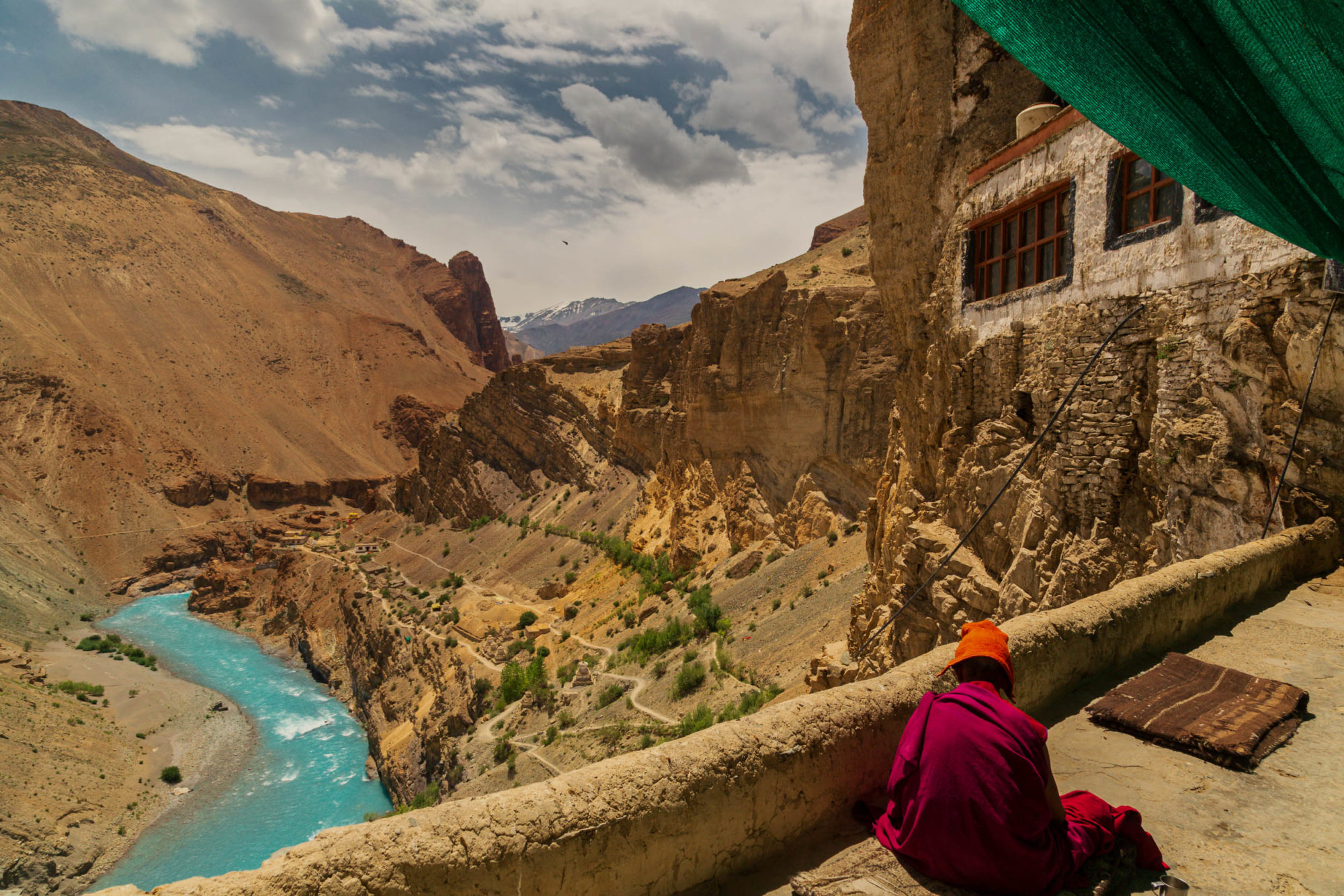
Our next destination was Padum, what you might call Zanskar’s headquarters. It’s a small town with good connectivity and many facilities. After replenishing supplies as much as possible, we plunged into the unknown. We weren’t sure what lay ahead or when we could buy supplies again. As we pedaled along, numerous people on the route talked to us, wished us good luck, and prayed for our passage, all with big smiles on their faces. They live a relatively humble life here, though technology and rapid infrastructure development are having a big effect on the traditional lifestyle.
At one point, we stopped briefly to observe a local marriage ritual, then made our way to a village called Zangla, which is home to the king of Zangla, who lives a fairly ordinary life. Still, it’s a position that seems to be held in high esteem among the people of Zanskar. We managed to find some ramen packets and were given some sweets by soldiers before continuing on.
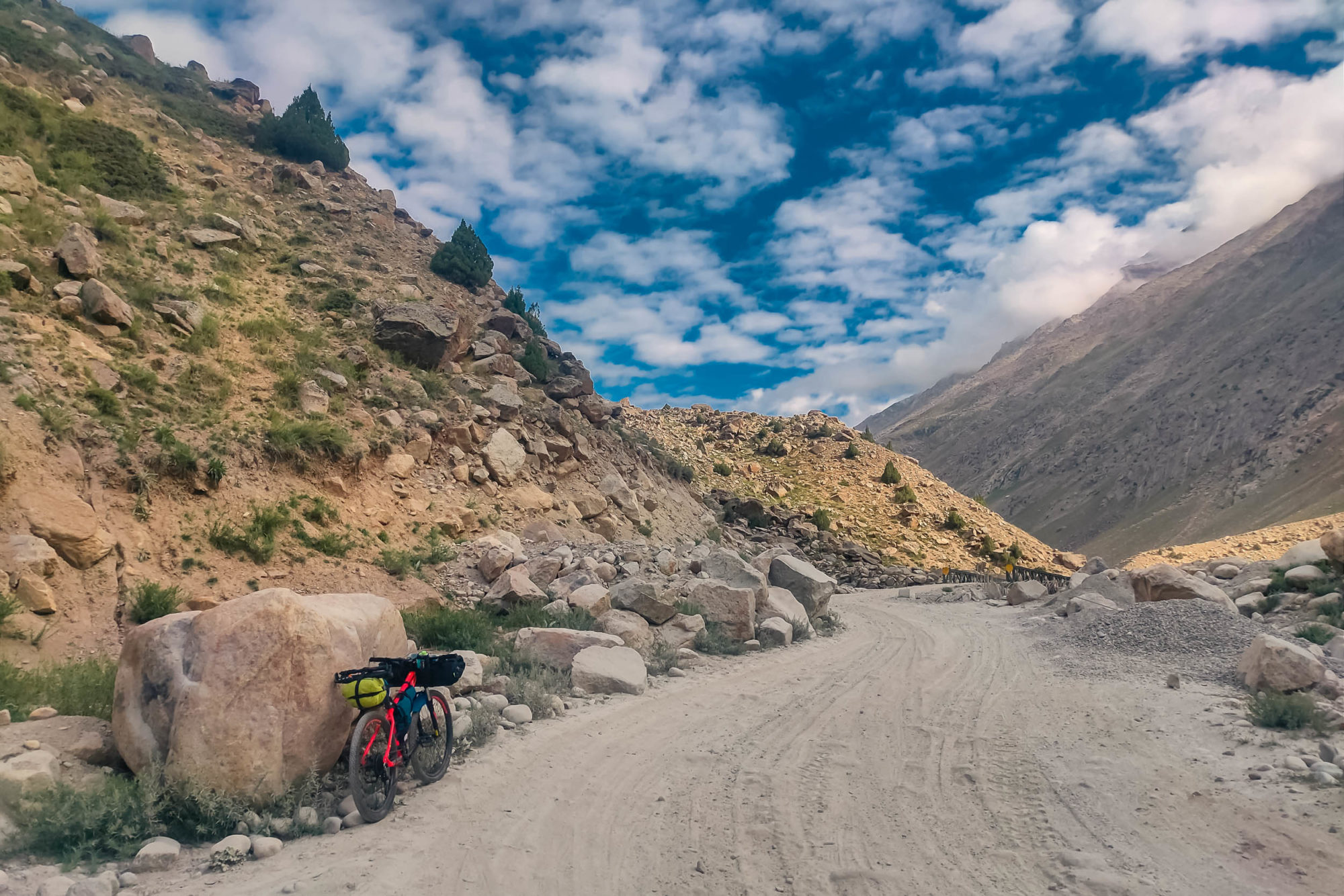
The next objective on our itinerary was reaching Lingshed Valley at the base of the highest pass of the route, Singe La, which towers at 16,590 feet. We plunged into an uncanny lunar landscape. On one side, the Zanskar river was flowing mightily, and we were riding through narrow gorges. There wasn’t a soul in sight; we were all on our own amid the sublime landscape.
At 14,425 feet, Murgum La Pass stands guard at the gateway to Lingshed Valley, and the only way for us to go was up. We left the river gorges and started our ascent. This somewhat obscure eight-kilometer pass nearly broke my morale, and it put me on the verge of quitting. With an average gradient of 45 degrees on soft and sandy doubletrack, it was impossible to pedal. Instead, we had what felt like an endless hike-a-bike. I was telling myself that if I just took 20 strides, then I could stop to catch my breath. Nearly at the top, this was reduced to 10 strides before stopping to breathe.
With dwindling supplies, we weren’t eating nearly as much as we should have been. I didn’t know how much longer I could push before my tank would be completely empty. Thankfully, after four grueling hours of pushing our laden bikes, we finally reached the top. Once there, we were met with another dilemma: whether to go down to the Lingshed village again to get supplies or move ahead to Singe La Pass. After some foggy-brained deliberation, we decided to move on toward the pass. Dangerously low on food, we were eating only boiled rice and the occasional protein bar at that point.
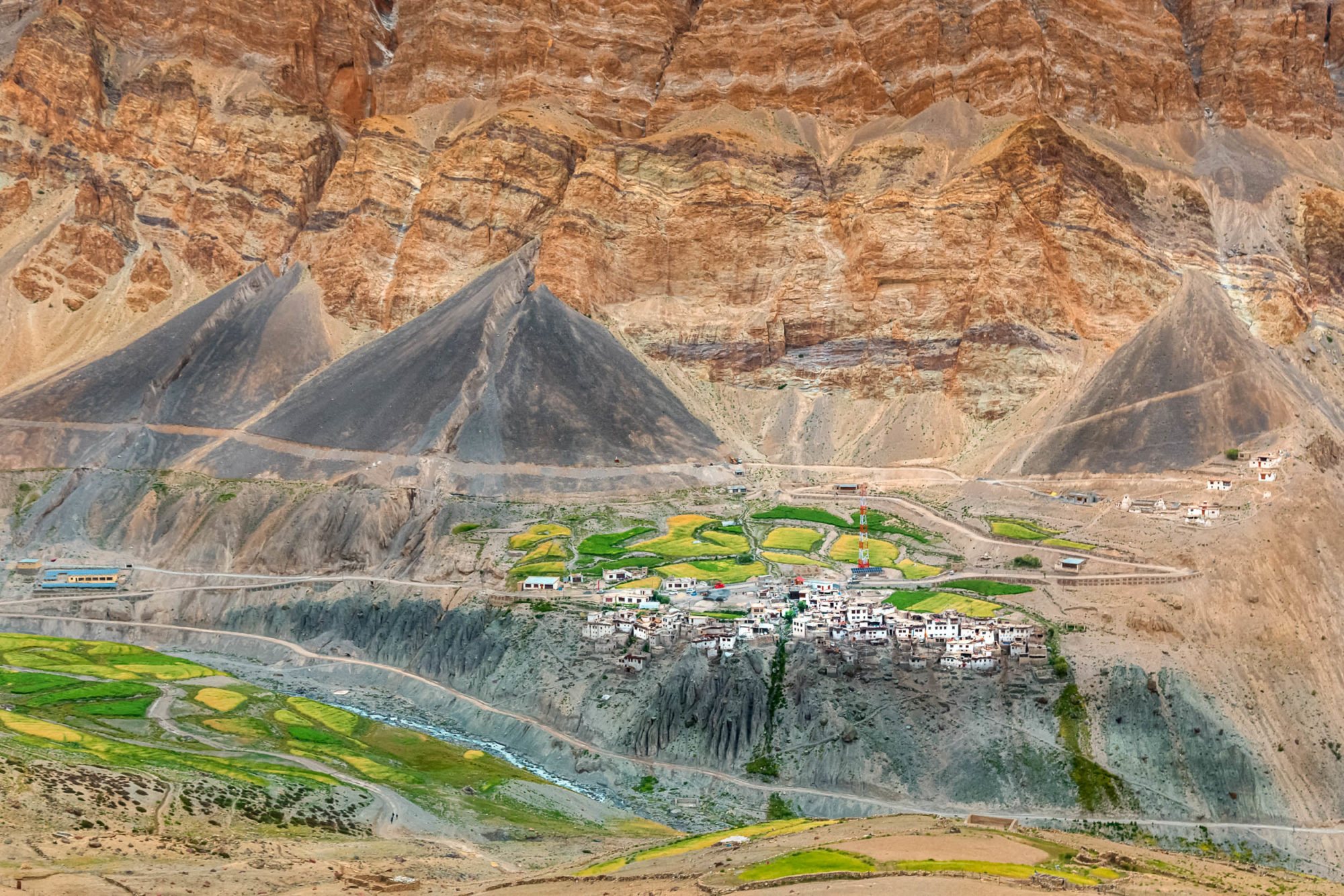
As expected, the climb up to Singe La was long and strenuous, but when we reached the top, the views blew me away. The entire Photoksar Valley was visible far below. A narrow, winding gravel trail descended from top to the horizon, and sunlight pierced through the clouds. It was sublime. Even though we were standing in sub-zero temperature in brutally intense wind, pausing there and admiring the view to our hearts’ content somehow made sense.
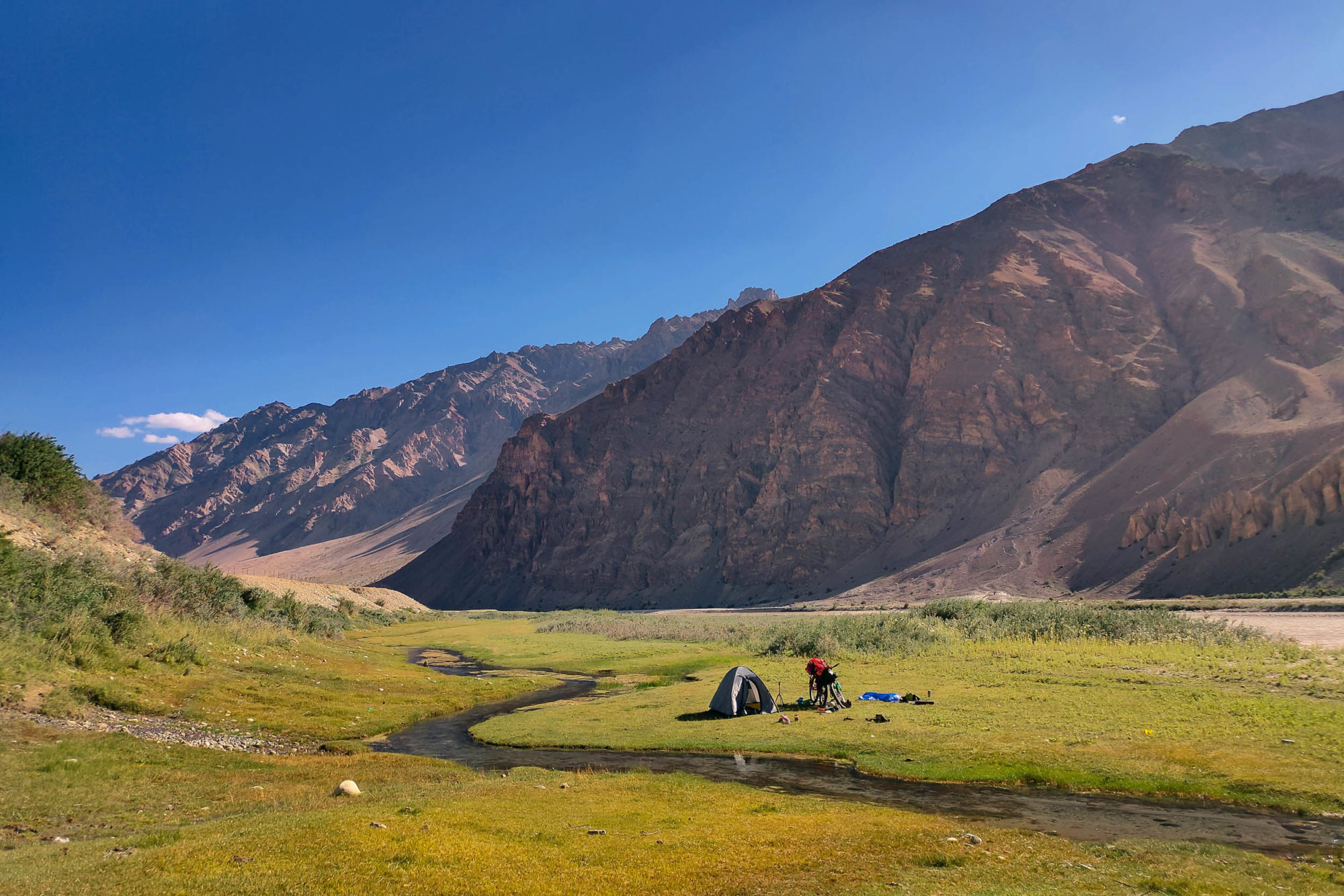
Descending the gravel road was pure adrenaline and otherworldly. After, the road briefly climbed to another pass before reaching the Photoksar Valley, a small green vale carved into a gray landscape. It’s like a scene from a movie. We were welcomed by the Indian Army for a comfortable stay and a filling meal.
Our next objective was the last hurdle, SirSir La Pass, which awaited at 15,761 feet. It was gradual compared to earlier passes, and we were used to tough climbs by this time. From the top of SirSir La, we were again treated to breathtaking views. I think of these serene landscape views as my reward for all the effort, and they keep me going during tough times.
From the top of the pass, we flew down one of the longest descents I have ever experienced: almost 28 kilometers of glorious downhill. It was thrilling and joyful. We passed small villages with kids waving at us, and within hours reached the police checkpoint at Khalsi, where everybody was surprised to learn that we’d cycled through the terrain above.
Leh is just 95 kilometers from there, and as I was eating at a roadside stand, I felt sad to be heading into the hustle and bustle again, leaving the bliss of the last 14 days behind. Those two weeks were a highlight of my life, in fact. I reflected on all the weather we’d endured, all the distance we’d covered, all the staggering climbs, the breathtaking scenery, the smiling faces, and so much more.
I finished the ride feeling satisfied that I’d experienced the very best of Zanskar. It was an equal test of both mind and body, and despite the journey’s many challenges, it only made me more eager to see other remote parts of Zanskar. I know I’ll be back soon.
The Route
Related Content
Make sure to dig into these related articles for more info...
Please keep the conversation civil, constructive, and inclusive, or your comment will be removed.






